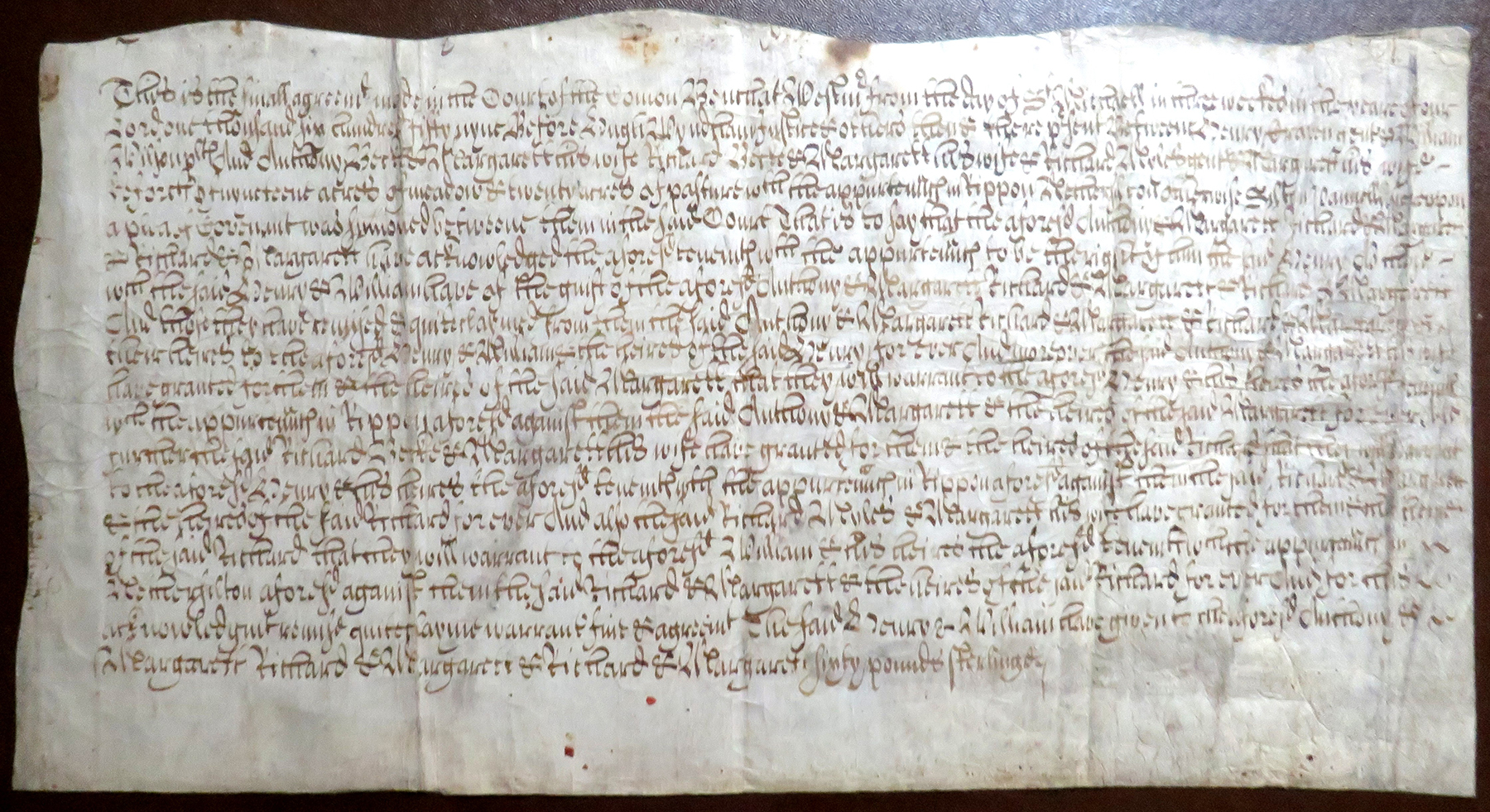The High Cost of Money
Powered by Pinnacol Assurance
They say that only two things in life are certain: death and taxes. This seems accurate, but there is a lot of living to do in between, and seeking new adventures should be on the list.
Visiting colorful New York antique shops is one of my quests and has always intrigued me. On one occasion, I chanced upon a dried and musty old vellum document that caught my attention even though I had no real knowledge of what it might be. Its Gothic cursive script was the only clue that it was most likely British. It was probably some official document because it was indentured* on the left side and at the top. It had no royal seal or signatures, so I knew it was not a governmental decree.

I found it far too fascinating to resist purchasing it. I soon attempted to translate the many strange words, phrases, and colloquialisms typical of most medieval documents. The challenge was daunting. A full page was devoted to lengthy dialogue, with only tiny breaks between words or sentences. Occasional Latin phrases and abbreviations comingled with other remarks.
In time, and with help from more knowledgeable friends, I determined that this was a land grant dated 1659 for a piece of English property. The price paid for the house was £50 sterling, quite a sizable amount at that time. The indenture verified the transaction by providing each party with a record of the sale.
I long enjoyed this enchanting piece of withered sheepskin as a unique artifact. In time, it became even more significant when I realized that the writing was similar to that found on medieval British tally sticks of that era. Additionally, the royal British exchequer might have recorded this transaction and thus preserved it on both their official tally “stock” and “foil.”
Thus, the spark was lit for me to investigate further. No pun intended, but as history records, there was an actual spark and a fire in the Tower of London that eventually ended my chance of finding further information about the property contract.

*An indenture is a deed made between two or more parties. The word indenture originated when a number of copies of a deed would be incorporated onto a single piece of parchment, which would then be cut into individual deeds, with each party holding his own copy. The cutting would be done in such a way as to produce irregular (or indented) edges so that the authenticity of one copy of the deed could be tested in the future by checking whether its indented edge matched the indented edge of another copy.

Price Hikes
However, my investigation led me to a new adventure—learning how the cost of living has continued to rise throughout history and what things used to cost our distant ancestors.
I learned that the cost of living in America has increased about 15-fold since the Declaration of Independence was signed in 1776. Not all prices have increased at the same rate since then, but most necessities of life have changed over the years. Housing and food are always essentials. My document noted that the cost of a home in colonial times was £50, and the average annual wage was £13. Compare this to today, where the cost of homes has ballooned to about 400k, while the average annual salary sits at $60,000.
Inflation and the fluctuating value of gold and silver have continued to change throughout history but are not the only causes of ever-increasing prices. Supply and demand are clearly the culprits. Within the past 100 years, Americans have seen the average annual wage rise from less than $2,000 to today, when two working newlyweds may have a combined income of $100,000 to $150,000 and feel that amount barely fills their needs.
Savvy numismatic collectors are fortunate to know and understand these things through their close association with history, money, trade, barter, and the cost of collector coins, where everything revolves around supply and demand. To quote the sage advice of many collectors, “The time to buy a coin you truly want is when one becomes available and you can afford it.”
